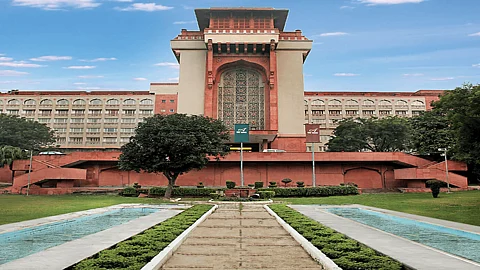The Ashok: How A State-Funded Luxury Hotel Became A Symbol Of Independent India
It might seem strange now, you'd probably scoff and complain about tax-payer money going to waste if you heard the government was building a five-star hotel. Luxury and statecraft don’t usually belong in the same sentence. But in 1956, when The Ashok was being built, the idea made a different kind of sense.
India was newly independent, barely a decade out of colonial rule. There was a deep need to assert both competence and confidence on the global stage. The world was coming to Delhi — literally, for the ninth UNESCO conference — and the capital had no hotel that could match international expectations. The few that existed — Imperial, Maidens, and The Cecil — were colonial leftovers, insufficient in scale and outdated in feel.
The Ashok was about signalling. It showed the world that India could host presidents and royalty, that we were not just a poor former colony but an equal; a dignified host. It proved that we didn’t need to rely on British-run establishments to represent the country and that the state could create something modern, homegrown, and impressive without private capital or foreign branding.
Funded in large part by former Indian royalty — 15 out of 23 original shareholders were erstwhile rulers of princely states — the hotel was a collaborative effort, drawing on both public capital and aristocratic legacy. It was built in just 15 months on 25 acres of land donated by Karan Singh, the prince regent of Jammu and Kashmir. Architect E.B. Doctor’s design reflected a post-colonial aesthetic, blending Indo-modernist sensibilities with deliberate nods to India's past: jharokhas, jalis, pink sandstone, and suites themed after Indian regions. Even its name, 'Ashoka', was symbolic, invoking an emperor known for unification and diplomacy.
Jawaharlal Nehru took a personal interest in the hotel’s development. Anecdotes describe him riding in on horseback to inspect progress, checking structural updates as well as its flower beds and mango trees. The Ashok was designed to be a stage on which the new India could perform its statehood.
Over time, the hotel became the unofficial residence for visiting dignitaries and foreign heads of state: Queen Elizabeth II, Marshal Tito, Margaret Thatcher, Fidel Castro, Che Guevara, and Bill Clinton all passed through its corridors. For a time, the Saudi Arabian ambassador lived in its presidential suite.
The Ashok became a social and cultural hub for Delhi as well. It launched the Supper Club, one of the city’s earliest nightclubs, in the 1970s. Performers like Usha Uthup, Sharon Prabhakar, Hema Malini and Uday Shankar all graced its stage long before they became household names. Its restaurants — Rouge Noir, Frontier, China Town, Burgundy — introduced international cuisine to the capital. The French chef Roger Moncourt trained a generation of Indian chefs, including Sanjeev Kapoor. Unlike the trend of importing foreign chefs, The Ashok sent its own staff abroad for training, then brought them back.
It’s also a site thick with anecdote and memory. Rajiv and Sonia Gandhi’s wedding reception was held here in 1968. Charles Sobhraj was arrested after a botched robbery attempt at the in-house jewellery store. Zubin Mehta once walked out after spotting a cockroach in his room. The theme song for the 1982 Asian Games was composed here by Ravi Shankar. Shah Rukh Khan lingered in its lobby during the early days of his career. Scenes from 'Laawaris' and 'Chandni' were shot on-site.
Through it all, the hotel’s purpose remained consistent: a symbol of post-independence pride, accessible luxury, and state-led hospitality. Even as Delhi’s hospitality landscape shifted, the Ashok retained its peculiar character.
In recent years, that storied history has come under threat. Successive governments have floated the idea of disinvestment or long-term leasing. But the building still stands. The Ashok was a message. It is a refusal to be hosted and a decision to host.
If you enjoyed reading this, here's more from Homegrown:
The Death Of Creative Autonomy?: Raanjhanaa's New AI-Led Ending Is An Early Warning Sign
Puppets Of Desire: The Enduring Power Of Manik Bandyopadhyay's 'Putul Nacher Itikotha'
Naseeruddin Shah At 75: The Legacy Of The Conscience-Keeper Of Indian Cinema


